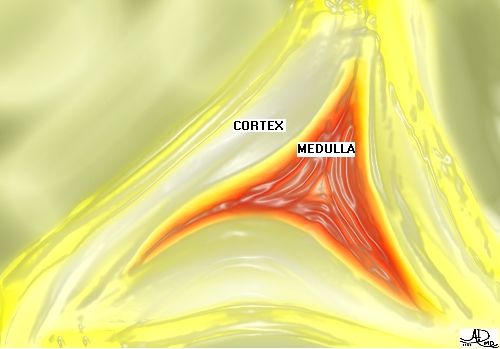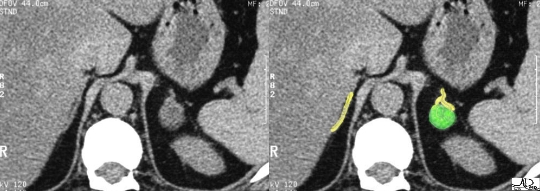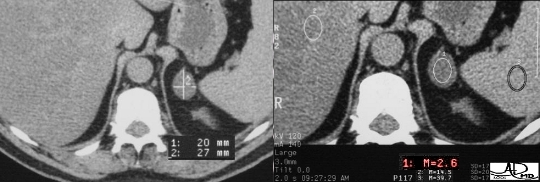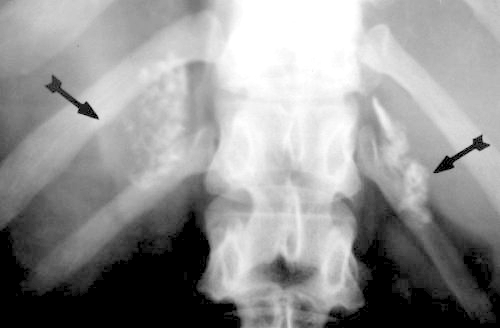Character-Normal
The normal adrenal gland is soft and friable. It is usually surrounded by fatty tissue and is encapsulated. The surface appears corrugated or nodular and is usually not smooth.
The normal color is a golden yellow color which can be distinguished from the more pale surrounding fat. The capsule is a thin fibrous structure surrounding the gland attached by many fibrous bands which penetrate into the gland.
When the adrenal is cut, the outer cortex and the inner medulla can be distinguished by color. The cortical (outer) layer appears golden yellow while the inner medulla appears more flattened and a darker reddish/brown.



Incidentaloma
An “incidentaloma” is the most common adrenal tumor. It represents a small benign adenoma, (“oma” = tumor) of no functional significance, which is found incidentally, and hence its name. A nodule that is less than 3cm. with a density of less than 10 HU on CT, is diagnostic of the “incidentaloma”. The characteristic finding on MRI is a darkening in the “out of phase” T1 sequence of the tumor .


Calcification in the Adrenal Glands

Courtesy of: Ashley Davidoff, M.D.
The most common cause of adrenal calcification is:
hemorrhage (occurring in the perinatal period) or
trauma.
Other less common entities producing calcifications in the adrenal include:
· histoplasmosis
· neuroblastomas
· tuberculosis
Uncommon causes include:
· Addison’s disease
· amyloidosis
· Cushing’s syndrome
· cysts
· neoplasms
· pheochromocytomas
The idiopathic causes have no known etiology.
